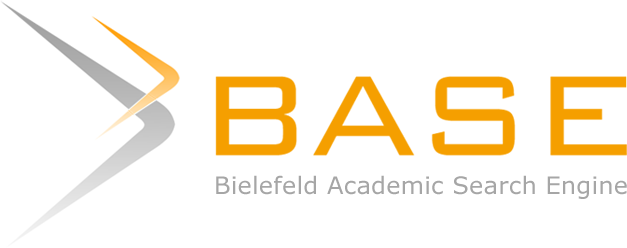Learning Mathematics on Multiplication in Elementary School with the Help of Props
DOI:
https://doi.org/10.51574/judikdas.v2i2.1271Keywords:
math learning, multiplication, propsAbstract
The implementation of this study aims to determine the appropriate teaching aids for multiplication material in elementary schools. The design of this research is library research by preparing equipment, compiling a work bibliography, managing time, reading and making research notes. The props used to teach multiplication material are KOBELA (Magic Learning Box), Jarimatika and Multiplication Board. with the results of the literature review, it can be concluded that teaching aids function to explain or demonstrate a subject in the teaching and learning process on multiplication material.
References
Febriyanti, F., Bagaskorowati, R., & Makmuri, M. (2019). The Effect of The Realistic Mathematics Education (RME) Approach and The Initial Ability of Students on The Ability of Student Mathematical Connection. International Journal for Educational and Vocational Studies, 1(3), 153–156. https://doi.org/10.29103/ijevs.v1i3.2117
Harliastuti, E., Murtiyasa, B., & Anief, S. (2012). Matematika di Sekolah Menengah Pertama Negeri 2 Karanganyar Naskah Publikasi. 1–12.
Harnanto, S. (2016). Alat Peraga Kotak Belajar Ajaib (Kobela) dalam Pembelajaran Matematika Materi Perkalian dan Pembagian Sekolah Dasar. Jurnal Ilmiah Pendidikan Dasar UNISSULA, 3(1), 33–42.
Juandi, J., Firdaus, M., & Oktaviana, D. (2020). Pengembangan Alat Peraga Papan Perkalian Berbasis Problem Based Learning Terhadap Kemampuan Pemecahan Masalah Siswa. EMTEKA: Jurnal Pendidikan Matematika, 1(2), 95–104. https://doi.org/10.24127/emteka.v1i2.580
Kamarullah, K. (2017). Pendidikan Matematika Di Sekolah Kita. Al Khawarizmi: Jurnal Pendidikan Dan Pembelajaran Matematika, 1(1), 21. https://doi.org/10.22373/jppm.v1i1.1729
Khusnul, Z. (2021). Alat Peraga KOBELA (Kotak Belajar Ajaib Perkalian). www.youtube.com. https://www.youtube.com/watch?v=6D5XNCgHSxc
Lisanto, H., Ulya, M., Pratama, P., Zakiyati, N. M., Alviann, A., Hafis, I., Setiawaty, R., & Artikel, S. (2024). Pengembangan Media Alat Peraga Kotak Baper ( Belajar Perkalian ) untuk Meningkatkan Kemampuan Perkalian Siswa SD 2 Getassrabi Info Artikel. 7(1), 30–38.
Oktafiani, W., Budiarti, M. R., Solekha, S., Yulistia, T. F., Oktaviani, O. M., & Widodo, S. (2018). Trans Model Mathematics Education (T2Me) Untuk Meningkatkan Keterampilan Operasi Hitung Perkalian Berbantuan Teknik Subatsaga Di Sekolah Dasar. Metodik Didaktik, 14(1), 1–7. https://doi.org/10.17509/md.v14i1.9347
Ramanda, R., Akbar, Z., & Wirasti, R. A. M. K. (2019). Studi Kepustakaan Mengenai Landasan Teori Body Image Bagi Perkembangan Remaja. Jurnal Edukasi: Jurnal Bimbingan Konseling, 5(2), 121. https://doi.org/10.22373/je.v5i2.5019
Risqi, W., & Siregar, N. (2023). Media Papan Pintar Materi Perkalian dalam Pembelajaran Matematika Permulaan di Sekolah Dasar. Jurnal Ilmiah Pendidikan Profesi Guru, 6(2), 1–9. https://doi.org/10.23887/jippg.v6i2.63497
Suliani, M. (2020). Persepsi Siswa Terhadap Penggunaan Alat Peraga dalam Pembelajaran Matematika. SJME (Supremum Journal of Mathematics Education), 4, 99–100. https://doi.org/10.35706/sjme.v4i1.3143
Sulistyowati, E. (2014). Penggunaan permainan dalam pembelajaran perkalian di kelas II SD/MI. Al-Bidayah, 6, 143–158.
Suwardi, S., Firmiana, M. E., & Rohayati, R. (2016). Pengaruh Penggunaan Alat Peraga terhadap Hasil Pembelajaran Matematika pada Anak Usia Dini. Jurnal Al-Azhar Indonesia Seri Humaniora, 2(4), 297. https://doi.org/10.36722/sh.v2i4.177
Tri, A. P. (2012). Penggunaan media jarimatika untuk meningkatkan hasil belajar matematika materi perkalian pada siswa kelas IV SD Negeri Combongan III Sukoharjo tahun ajaran 2011/2012. 1–26.
Trisnani, N., & Sari, E. F. (2020). Keefektifan Model Realistic Mathematics Education Berbantuan Media Dakon Terhadap Hasil Belajar Perkalian. Joyful Learning Journal, 9(1), 1–5. https://doi.org/10.15294/jlj.v9i1.39114
Wiyantari, W. (2017). Pengembangan alat peraga matematika materi perkalian untuk siswa dengan lambat belajar SD Muhammadiyah Sagan Yogyakarta. Skripsi. https://repository.usd.ac.id/11531/2/131134089_full.pdf
Downloads
Published
How to Cite
Issue
Section
License
By submitting an article manuscript, the author agrees to all policies set forth by the journal and publisher.
The author declares that:
- They have been authorized by their co-authors to enter into this agreement.
- The work described has not been officially published before, except in the form of an abstract or as part of a lecture, review, thesis, or preprint journal.
- The work is not currently under consideration for publication elsewhere.
- Its publication has been approved by all authors and by the responsible authorities—either implicitly or explicitly—of the institution where the work was conducted.
- They have obtained the right to reproduce any material that has been published or copyrighted elsewhere.
- They agree to the following license and copyright agreement.
License and Copyright Agreement
Authors publishing in Jurnal Ilmu Pendidikan Dasar Indonesia agree to the following terms:
- Authors retain copyright and grant the journal the right of first publication with the work simultaneously licensed under a Creative Commons Attribution-ShareAlike (CC BY-SA 4.0) License, which allows others to share the work with acknowledgment of the authorship and initial publication in this journal.
- Authors may enter into additional non-exclusive contractual agreements for the distribution of the journal's published version of the work (e.g., posting it to an institutional repository or publishing it in a book), with acknowledgment of its initial publication in this journal.
- Authors are permitted and encouraged to post their work online (e.g., in institutional repositories or on their websites) before and during the submission process, as this can lead to productive exchanges, as well as earlier and increased citation of the published work.



1.png)
3.png)




